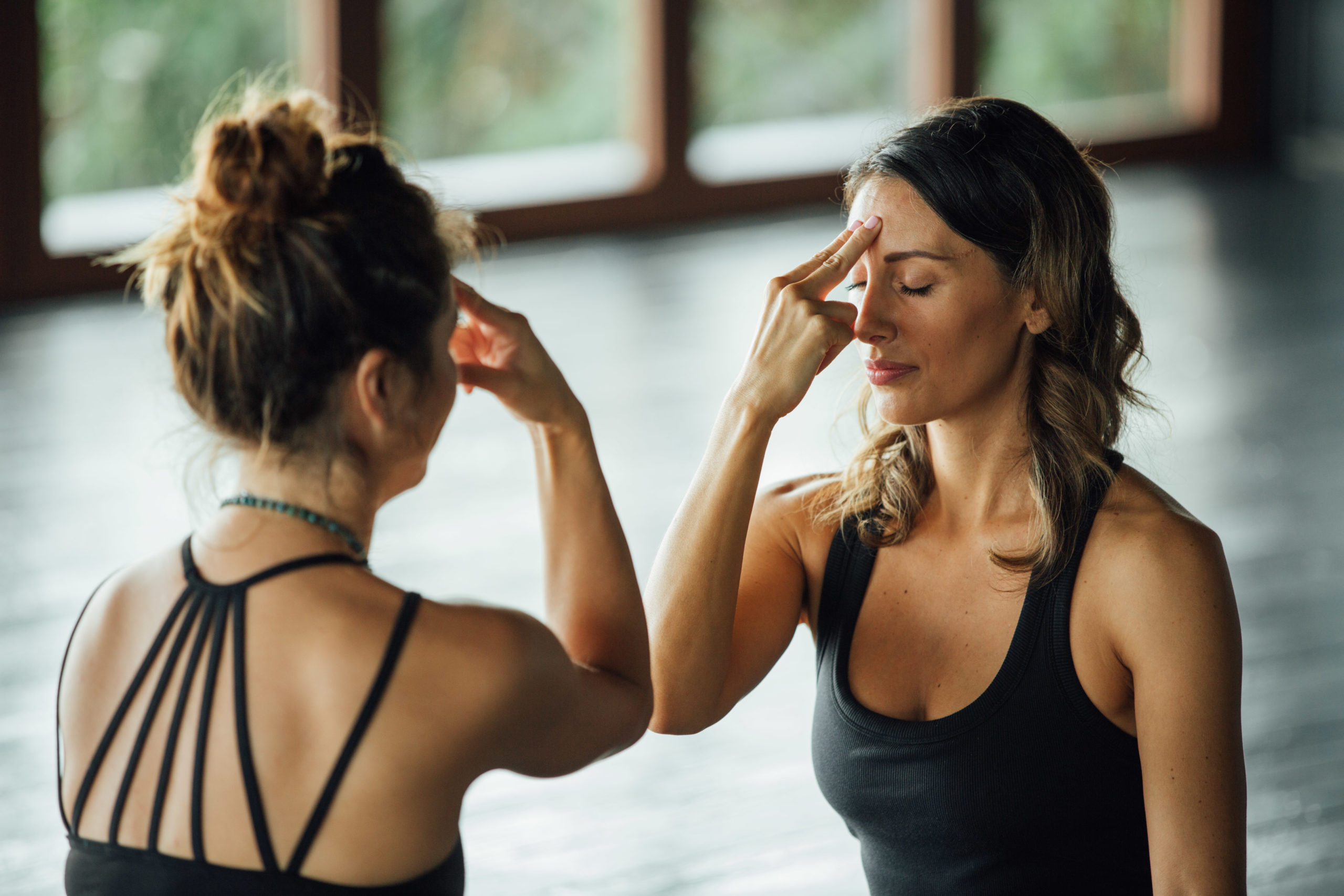MENU
OPEN SIDEBAR >
Westerners often think of yoga as being just a physical activity. Whether it’s the vigorous flow of vinyasa or the passive stretching of yin, the focus of Western yoga is usually on the poses. There’s no doubt, practicing yoga poses helps build strength, increase flexibility, improve cardiovascular health, and much more.
But the practice of hatha yoga goes much deeper than that. Rather than simply a form of fitness, hatha yoga is an all-encompassing path of exploration. It’s rooted in ancient philosophy and spiritual texts, and it concerns the entire being – mind, body, and spirit.
The Purpose of Hatha Yoga
The practice of hatha yoga addresses every level of being, and it aims to establish equilibrium on each one – physical, mental, emotional, and psychic.
Physically, it improves fitness, reduces pain, and can even prevent and treat health problems from arthritis to hypertension. Hatha yoga also includes practices that cleanse the body and address physical imbalances. On the level of the mind, it helps improve focus and reduce mental chatter, and can be used to improve conditions such as anxiety and depression.
But perhaps most importantly, in addressing these more superficial levels of existence, hatha yoga also prepares us to go deeper: it readies the body and mind for intense meditation practices and higher spiritual experiences.
The Yoga Sutra of Patanjali describes a yogic path called raja yoga. In this branch of yoga, the first step is controlling the mind through moral codes and social observances, before moving on to other aspects of yoga. But for many practitioners, control over the mind is not possible without first gaining control over the body. That’s where hatha yoga comes in.
Through asana and other hatha practices, we can cleanse, prepare, balance, and learn to control our physical body. Only then can we embark on the path of raja yoga, eventually developing control of the mind and experiencing pure consciousness.
Hatha Yoga and Energy
The practices of hatha yoga work not only on the physical body (including our muscles, bones, lungs, and heart), but also on the subtle or energetic body. There are said to be 72,000 energetic channels called nadis in the body, and they intersect at energy centers called chakras. The three most prominent channels are known as pingala, ida, and sushumna.
Within the subtle body are two opposing energies, which exist within everything. They can be characterized in many different ways: masculine and feminine, yin and yang, sun and moon. In fact, the Sanskrit word hatha can be broken down into its two components: “ha,” meaning sun and “tha,” meaning moon.
Another way of thinking about these two energies is that one, prana shakti, is physical, dynamic, and associated with the sun. Prana shakti travels through pingala nadi and governs the right side of the body. When it is out of balance, we experience physical disease. Its opposing force, mental shakti, is related to the mind and associated with the moon. Mental shakti travels through ida nadi and governs the left side of the body. When it becomes imbalanced, we experience mental illness.
What does all this have to do with hatha yoga? The goal of hatha yoga is to balance these two energies. People are typically more dominant in one energy or the other, and the two are constantly shifting in relation to one another.
But when they come into balance, we activate the central energetic channel: sushumna nadi. The flow of energy through sushumna nadi is the precursor to a kundalini awakening, and allows us to access hidden parts of our minds and reach a higher level of spiritual experience.
Hatha Yoga Practices
Hatha yoga includes, of course, the physical poses – the asana – that we most associate with yoga. Whether it’s vinyasa, Iyengar, restorative, or even something like aerial yoga, all are forms of hatha.
But hatha yoga actually encompasses a much wider body of practices designed to purify the body. Just as important as asana is pranayama, or breathwork. This includes exercises such as nadi shodhana (alternate-nostril breathing), ujjayi (victorious breath), and brahmari (humming bee breath).
Like asana, pranayama aims to purify the body, further preparing us for meditation practices and higher spiritual awareness. But it also has the immediate benefit of building prana, or lifeforce energy, within the body and directing its flow through our energy channels. On a more superficial level, breathwork practices have been shown to promote relaxation, improve focus, and enhance lung function as well.
Another important component of hatha yoga, and one that does not appear in most other yoga lineages, is shatkarma. “Shat” is the Sanskrit word for six, and “karma” translates to action. Shatkarma (sometimes written as two separate words) are six types of practices used to purify and balance the body. Specifically, they help to remove excesses of mucus, bile, and gas, which allow us to practice asana and pranayama more effectively.
Some shatkarma exercises can be dangerous if not done correctly and under the supervision of a trained teacher. But the two most accessible are trataka (concentrated gazing, often using a candle) and kapalbhati (a series of short, forceful breaths).
Which Practices Are Right for You?
As you can see in this very brief overview, hatha yoga encompasses many, many different techniques. But yogis don’t necessarily need to practice every single one, and we won’t all benefit from doing the same practices.
Asana, pranayama, shatkarma, and other techniques should be carefully selected depending on your individual constitution, experience, and tendencies. The most appropriate practices for a given session should also consider time of day, season, environment, and monthly cycles. With the guidance of a knowledgeable teacher, you’ll be able to learn which combination of practices will be most useful for you.
Do you want to learn more about how the Moksha coaching program can support your hatha yoga practice? Book your free consultation call now! Click here to book

Nadi Shodhana Pranayama
The Moksha coaching program is led by Sarah Savidge, founder of Moksha Wellness. Sarah is a yoga teacher and nutrition coach with years of experience helping people deepen their practices and improve their well-being.



+ Show Comments
- HIDE COMMENTS